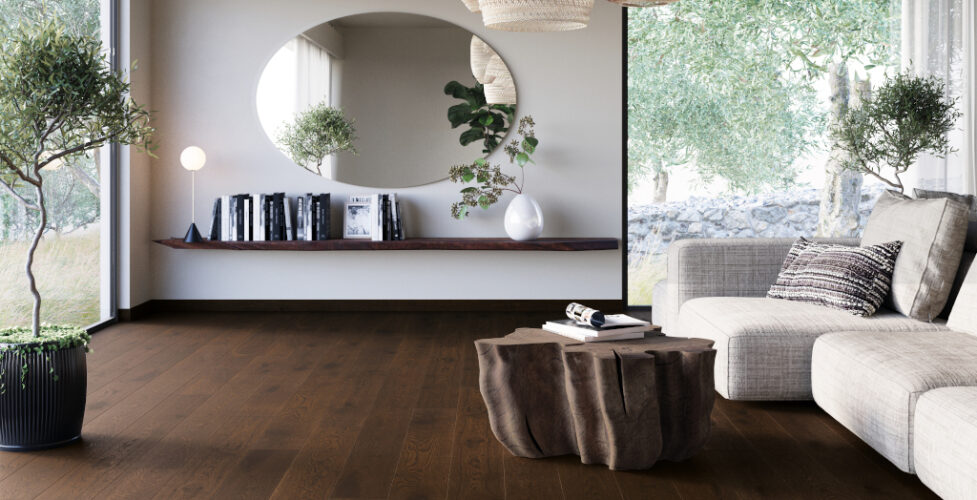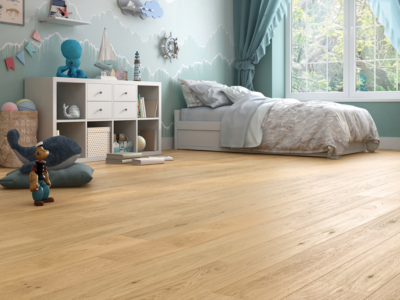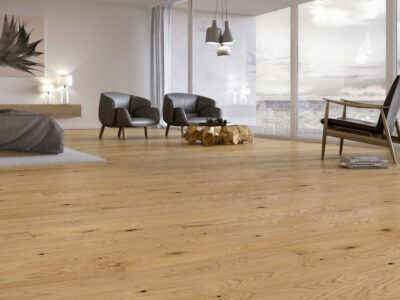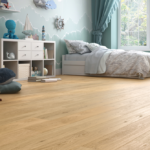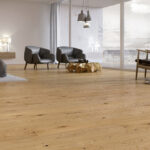Wood is the oldest material used for floor finishing. Every now and then, competitive solutions emerge: once it was linoleum, then laminate panels, and more recently, vinyl panels that imitate wood. Here we are looking at the similarities and differences between these materials, trying to determine which is better: wood or vinyl flooring?
Material: natural versus artificial
The main difference between wood and vinyl flooring is, of course, the material from which these products are made.
Wood flooring is made from a natural and breathable material that helps to maintain a healthy microclimate in the home. Each floorboard has unique knots, grain and texture, giving the floor a unique character. When choosing a wood floor, it is also worth paying attention to what the protective coating is made of. We recommend boards covered with eco-friendly oils or varnishes, which are the only choices we make in the production of Baltic Wood floors.
Vinyl panels are made from polyvinyl chloride (PVC), which in turn is composed of petroleum and salt. In the manufacturing process, ethylene and chlorine are separated from these two components to form polyvinyl chloride. This material is white, so it is necessary to use artificial dyes to get the wood pattern on it.
Durability and resistance
Compared with vinyl flooring, wood flooring is often portrayed as a product with limited durability, which is not true. Where does this myth come from? Mostly from the confusion between the terms of durability and resistance
It is a fact that wood is less resistant than vinyl to mechanical damage, but the lifespan of a wood floor is counted in decades, as it can be renovated many times. Can vinyl panels, after 20-30 years of service, also look as if they have just been installed? This is questionable, because if the floor is in fact used, marks will form on it.
Possibility of renovation
Both solid wood and layered wooden boards can be renovated. The thickness of the top layer determines how many times the layered panels can be renovated. In the case of Baltic Wood floors, it is 2.7mm, 3.5mm, and 6.6mm. The boards with the thickest top layer can be found in the NoLimits Collection, and they can be renovated up to 9 times, which translates into the lifetime of over 50 years (assuming the floor is renovated every 5 years).
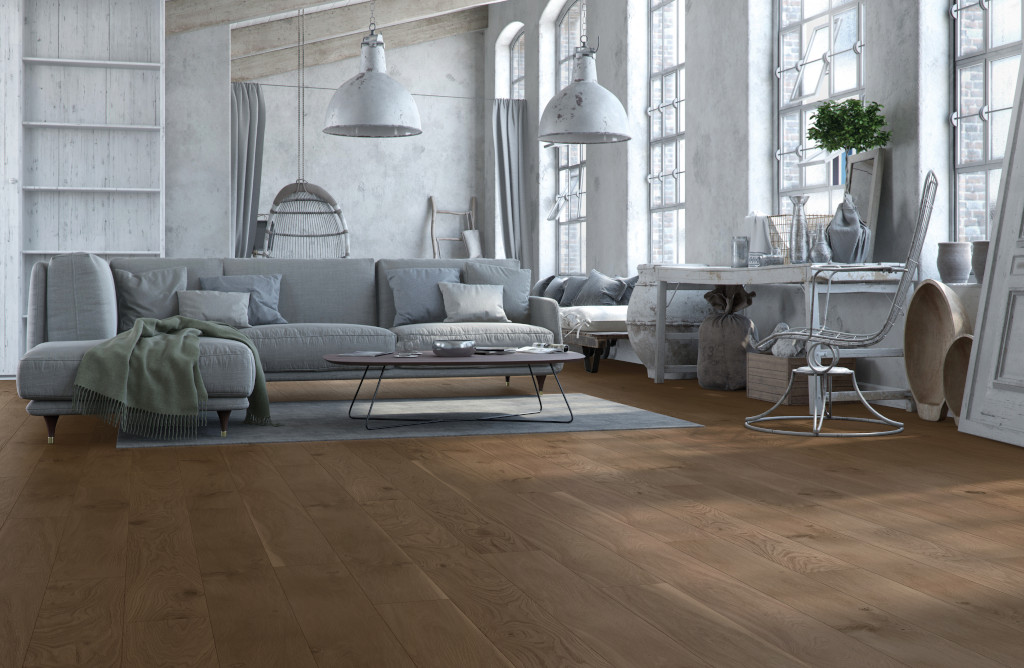
Vinyl panels cannot be renovated in the same sense as wooden floors. If scratches, cracks or dents appear on them, the material becomes discoloured, or the top layer wears off, it is usually necessary to replace the panel, and if we do not find one that fits perfectly, we will have to replace the entire floor. However, it is true that there have recently appeared vinyl panel renovation offers, but this new service usually involves repainting the vinyl panels in a similar or different pattern.
Aesthetics: wooden versus vinyl panels
The sense of aesthetics is an individual issue, and it is often dependent on trends. A few decades ago, we used to install wooden panelling in our homes, in combination with linoleum flooring in fancy patterns. While we do not know whether this choice was dictated by taste or perhaps by the availability of finishing materials, today this trend is judged negatively.
Wood floors are always fashionable, and – regardless of taste – considered a highly aesthetic choice. This follows from the most important feature – the naturalness of this type of flooring. Natural creations have their unique beauty and are inimitable. The same cannot be said of vinyl panels, on which patterns are mass-printed to imitate natural material.
Safety for health
Wood is a natural material, which means that it does not release harmful chemicals into the air. If the floor is treated with eco-friendly oils or varnishes, there is no possibility of toxic substances (formaldehyde or phthalates) being released, as these are not present in the product.
As for vinyl flooring, research is inconclusive and it really all depends on the manufacturer. The layers of vinyl panels are bonded using formaldehyde agents, and the material often includes an admixture of phthalates. The final product therefore contains toxic substances, and it all depends on the preservation process whether these will be released into the air after some time.
The price of layered wood and vinyl panels
It might seem that the biggest advantage of vinyl panels over wooden boards is the price. This has been the case with other wood imitation flooring materials. Their price was usually even more than 100% lower than that of natural wood floors.
Meanwhile, the price of vinyl panels rated as good quality is around PLN180-250 per m2. It is therefore the same as the price of Baltic Wood floors preserved with eco-friendly oils or varnishes. Approx. PLN180-250 is the regular price for the panels from the Smart Collection, Jeans Collection, while naturally aged floors (Timeless Collection), or ultra-durables ones with the thickest top layer, i.e. the panels from the NoLimits Collection are more expensive. The quoted prices are going prices in 2024.

Oak Classic 1R (Smart Collection) 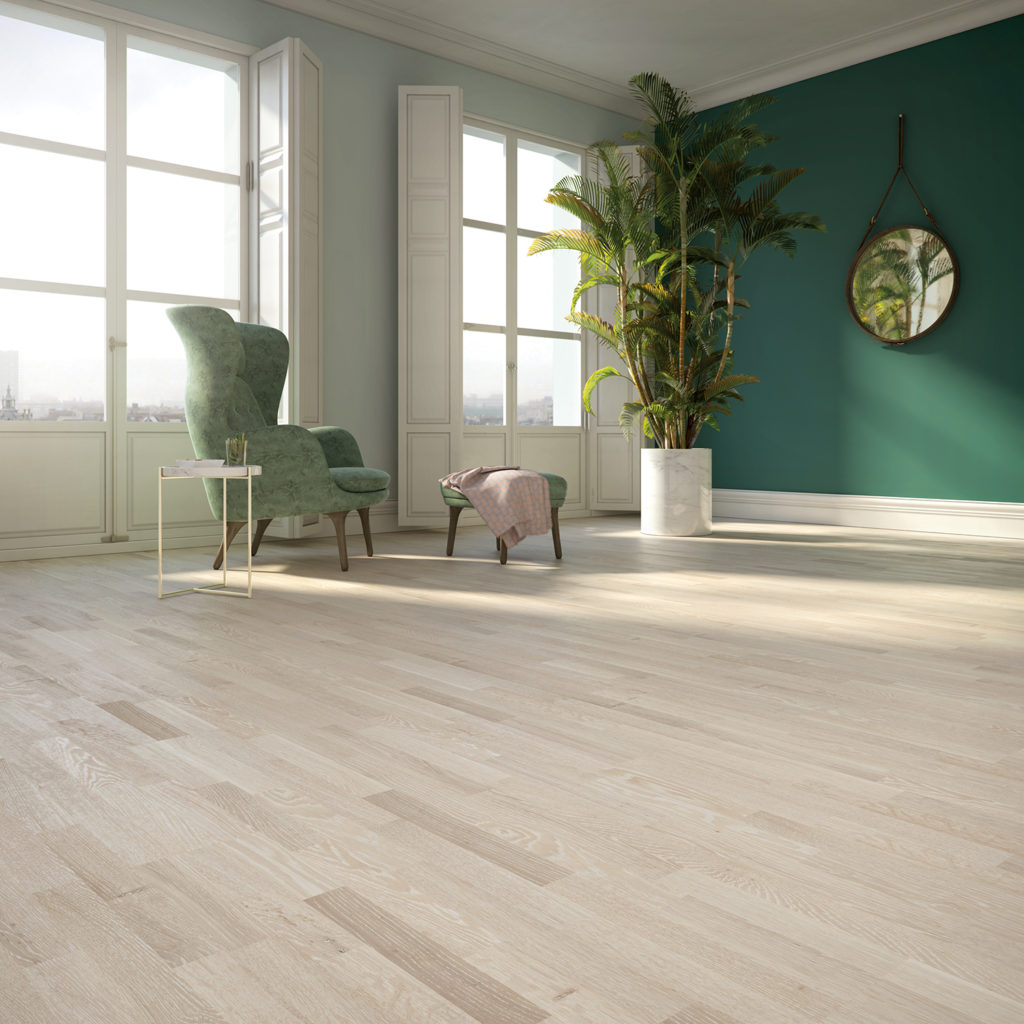
TWO_4HER oak wood (Jeans Collection) 
Lost Coffer 1R (Times Collection)
Of course, our floors (of the highest quality, in various colours and patterns) can also be purchased at discount prices: starting from approx. PLN100 per m2.
Facility for installation over underfloor heating
Baltic Wood floors, made of oak or ash, can be installed over underfloor heating. Most vinyl panels are also suitable for this type of heating. There are practically no differences in efficiency either: vinyl panels conduct heat well, because they are very thin, whereas as regards wood this is due to the characteristics of the material itself. The difference can only be felt “underfoot” – wooden boards are usually perceived as more pleasant to the touch.
Environmental impact
Wood flooring is fully recyclable. Vinyl flooring is not. Made from polyvinyl chloride with artificial dyes, it puts a strain on the environment, increasing the amount of waste that is hardly recyclable.
Wood versus vinyl flooring – a table comparison
All the features of wood and vinyl flooring discussed above are shown in the table.
| Feature | Wooden flooring | Vinyl flooring |
|---|---|---|
| Naturalness | Yes | No |
| Composition | Wood, eco varnish or oil | Polyvinyl chloride, artificial dyes |
| Presence of toxic substances | No, if eco-friendly varnishes or oils are used | Yes |
| Recommended for allergy sufferers and asthmatics | Yes | Rather not |
| Impact on home microclimate | Positive | No impact |
| Durability | Depending on the thickness of the top layer, from 15 up to 50 years | Depending on the class of the panels, especially of the surface layer |
| Possibility of renovation | Yes, multiple | No, unless by renovation we mean repainting the material |
| Resistance to mechanical damage | Low | High |
| Aesthetics | The beauty of natural material | Imitation of natural material |
| Price | PLN180-250 (Smart Collection, Jeans Collection) | PLN180-250 per m2 (good class) |
| Facility for installation over underfloor heating | Yes | Yes |
| Environmental impact | Flooring is fully recyclable | Flooring difficult to recycle, increases amount waste |

